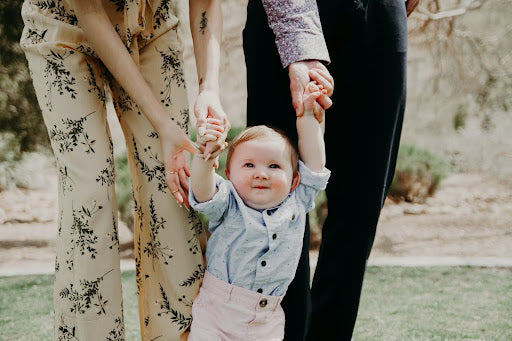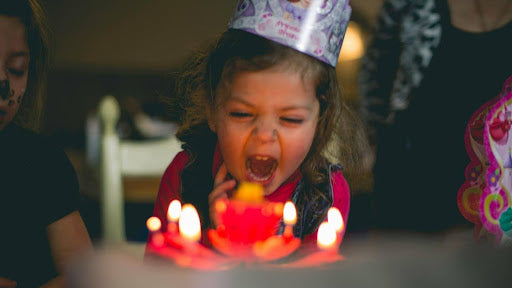- Remove your baby's diaper and clothes, then cover them in a towel in a warm room around 23.8 C (75 F) for the bath.
- Lay your baby flat, ideally on the floor, a changing table, your bed, or a counter close to a sink. Keep one hand on your baby, or use a safety strap at all times to prevent them from falling to the ground.
- Unroll the towel section at a time to expose the part of the body you're cleaning.
- Dip the clean cloth into the warm water first, then start wiping your baby. To prevent getting soap in your baby's mouth or eyes during this phase, just use warm water without any soap. Clean the eyes, neck folds, chin, around the outer ears, and the top of the head.
- Add a few drops of soap to the warm water to clean the other dirty body parts, including the genitals and beneath the arms. If your baby has a circumcision, refrain from washing the genital area to keep the wound dry unless specifically instructed to do so by the doctor.
- Add a tiny quantity of water to the bathtub. Normally, 2-3 inches (height) of water is sufficient. Depending on the type of tub you own, baby-specific tubs can be installed in sink or regular bathtubs.
- As soon as your baby is undressed, put them in the water so they won't get chilled.
- First, place your baby's feet into the bathtub while supporting their head up with one hand. For safety, keep their neck and head way above water at all times.
- Slowly pour or splash warm water on your baby in order to keep them warm.
- Wash your baby's hair and face with a washcloth, and wash their scalp once to twice a week.
- Eventually, wash their entire body with a damp washcloth or with warm water.
- Take your baby out of the tub with care, then use a towel and pat them dry. You need to ensure that you also dry the creases on their skin.
 Final Words
If your baby cries or dislikes taking a bath, you need to ensure that the bathroom/room is warm enough, the water is not too cold or hot, and that they are half covered in a towel (while giving a sponge bath) to make them comfortable. Babies generally enjoy bath time with bath toys. However, you need to be careful with bubble baths since they have a chance of drying your baby's skin.
Final Words
If your baby cries or dislikes taking a bath, you need to ensure that the bathroom/room is warm enough, the water is not too cold or hot, and that they are half covered in a towel (while giving a sponge bath) to make them comfortable. Babies generally enjoy bath time with bath toys. However, you need to be careful with bubble baths since they have a chance of drying your baby's skin.



